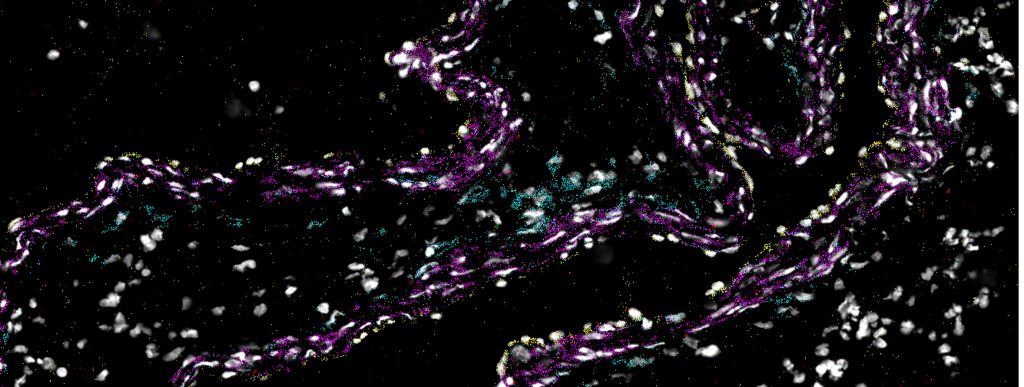Sponsored content brought to you by
Tangles of blood vessels in the brain can fail and bleed. These arteriovenous malformations are “a leading cause of hemorrhagic stroke in young people,” says neurosurgeon Ethan Winkler, MD, PhD, who is a research associate in neurological surgery at the UCSF Weill Institute for Neurosciences and a fellow at Barrow Neurological Institute. “The fundamental problem that we have right now is figuring out why these malformations bleed, and also what to do about them when they’re identified when they have not bled.”
To address those questions, Winkler uses spatial transcriptomics data collected with the Rebus Esper to understand the cellular makeup of the human cerebrovasculature. “Then, we can make comparisons by using analogous techniques with arteriovenous malformations to try to characterize a catalogue of cellular and molecular changes,” he explains.
Traditional methods lack the precision that Winkler requires. “When you use single-cell
sequencing technologies, you’re very prone to type-one false-positive errors, because you’re making a lot of predictions, you’re making a lot of comparisons.” In addition, traditional approaches remove a key element of the information that Winkler seeks. As he says, “One of the first steps in single-cell sequencing is you actually dissociate whatever you’re studying, so you lose all of the spatial information.”
Exploring interactions
The Rebus Esper delivers the data that Winkler needs. As he says, this technology “has played a fundamental role in validating our findings, as well as helping us appreciate the spatial distributions of some of these new cell states that we’ve discovered.”
In nearly every way, the brain works as an orchestrated organ, and its vascular system does, as well. Winkler notes, “The Esper really helps us understand cellular relationships in space in the sense that cells are not only driven by their molecular biology, but also by their interactions with their neighbors.” To find those interactions, Winkler needs the spatial information. “Complex spatially defined relationships between cells are extremely important,” he elaborates. “They help us to understand how cells interact via directional communications that ultimately dictate function.”
Compared to using other technologies to study arteriovenous malformations, Winkler says that the Rebus Esper provides “a more complete picture.”

Defining the cell types
A vessel consists of many cells, and Winkler is exploring their molecular makeup as he and his team are building a more complete cell census. As an example, he says, “The endothelial cells, which line the blood vessels in the brain, have unique molecular signatures depending on whether you’re in an artery, capillary, or vein.” By knowing these signatures, pharmaceutical scientists could target a specific type of vessel with a treatment.
Winkler explores these questions from basic and applied research perspectives. As he says, “My interest as both a clinician and a scientist is to translate findings.” He adds that this could mean using the information to develop a treatment or determine a person’s risk: “This information could be used in understanding what pathways might be important readouts for evaluating someone’s neurovascular health at a cellular molecular level.”
Making a model
In the future, Winkler plans to develop an in vitro model of this system. With this, he says that he hopes to “closely recapitulate the cellular diversity of arteriovenous malformations and use that for therapeutic discovery.”
This is possible only by knowing the cellular and molecular details with spatial precision in both healthy and diseased neurovascular systems. That requires advanced spatial transcriptomics and technology that can be easily used by a range of scientists.
To explain the future direction of this work, Winkler says that he will “continue technological development to help us come up with new therapies and new treatments.” He adds, “The evolution of technology allows us to ask either more complete or new questions.”
Learn more about the Rebus Esper


